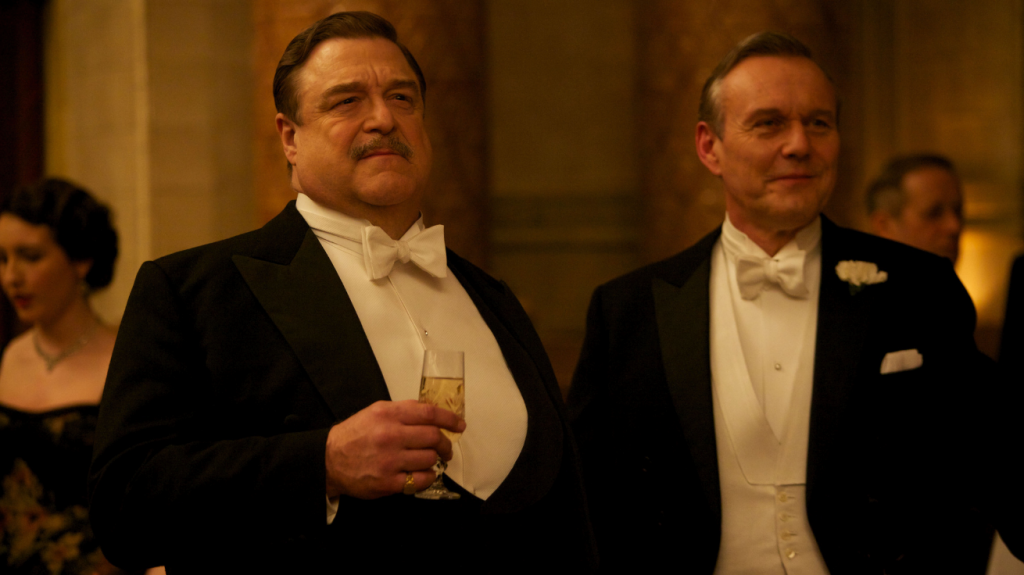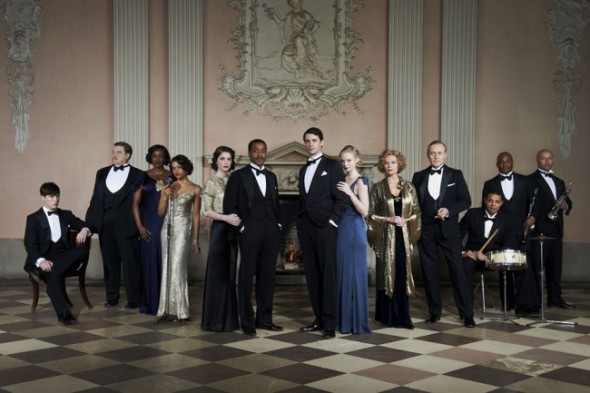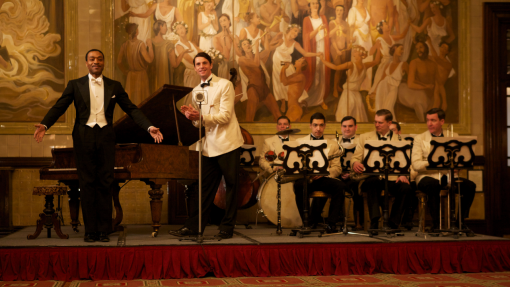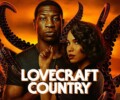
Distributor: Just Entertainment
Episodes: 5 + 1 post script interview
Duration: 90 min (per episode), 65 min interview
Dancing on the Edge (DVD) – Series Review
Quite the hype was started for Stephen Poliakoff’s “Dancing on the Edge”, a five episode miniseries starring established actors such as John Goodman, Chiwetel Ejiofor and Angel Coulby, the surprising star of “12 Years a Slave”. Dancing on the Edge tells a deep story on how the black jazz band “The Louis Lester Band” were finding a place to belong to in the 30’s London aristocracy. Their popularity skyrockets, causing ever more people to appreciate the music and performance of the group. But then tragedy falls upon them, leaving the band grasping on to not complete go up in flames, fitting for the noir era of cigarette smoke.
Dancing on the Edge takes place in the golden era of jazz. In the 1930’s London society, on the rebound after years of depressing and near Victorian values, we find former merchant, now band leader Louis Lester (Chiwetel Ejiofor) along with lead singer Jessie Taylor (Angel Coulby), vocalist Carla (Wunmi Mosaku) and their hardworking, determent manager Wesley Holt (Ariyon Bakare).
Early on in the series, Stanley Mitchell (Matthew Goode) a slick journalist befriends the jazz crew and sets in motion the events that will sparks the fire for the entire storyline, as he offers the Louis Lester Band a chance to move up their talent from the by shady, musk basement clubs to the wealthy and infamous Imperial Hotel. With a little unexpected assistance from the American real estate tycoon and one of the wealthiest men on the planet, Walter Masterson (John Goodman). Infiltrating slowly into the Britain’s high society along fancy children’s birthday parties, the band gains the interest of Lady Lavinia Cremone (Jacqueline Bisset) who gives the Louis Lester band a further boost, culminating in a performance that even pleased royalty. The attendence of Prince George, the Duke of Kent (John Hopkins) was indeed an event the jazz constellation could have never dreamed about.
Unfortunately, the sky that once seemed the limit darkened fast, as deeply rooted prejudice towards black artists resurfaces and one of the band members is brutally attacked. Being pulled back to earth by these events, the band is persuaded to continue on missing a member. Tensions rise and culminate in a tragic accident. What follows next is very illustrative of how close to impossible it was in this era to find justice and combat conspiracies that are being fed by the power of the two-faced aristocracy. The series end with a post-scriptum finale consisting that reflects the bands better period and provides deep insights in the feelings, personal background stories and ideology of the band members.
Poliakoff managed to steer an impressive crew of actors and actresses into the right direction. The borderline arrogant Louis Lester, elegantly portrayed by Chiwetel Ejiofor, is definitely a character to remember. The role of Walter Masterson, a typical bulky American industrialist as played by John Goodman comes across as lacking some inspiration. Strangely enough, it is not clear whether this was intentionally fitting the posture of mister Goodman onto a business man or due to bad acting on his part. The performances have not escaped the attention of the public, as the series was awarded multiple prizes and actors were nominated for awards on multiple occasions, including the Golden Globe Award for Best supporting Actress in a mini-series, which was won by Jacqueline Bisset for her portrait of Lady Lavinia Cremone. Indeed, Dancing on the Edge brings together a cast that’s up for the task, however some of the cast members merge more or less into the background. This is quite contrary to the expectations, as some of the band members really deserve more dialog and elaboration on their background stories. The latter are highlighted in the separated extra, shorter episode which is in essence an interview with the band members during the peak popularity of the Louis Lester band, although it would feel more in place to highlight in the premiering episode of the series, especially when considering the criticism on the slow pace.

Dancing on the Edge truly is a piece of art and is trying to tell a large number of stories simultaneously. It presents a carousel of emotions on the theme of the invisibility of black artists in a society where wealth and status go prior to compassion. The music that jazz bands brought were fresh and stirring, which was indeed greatly appreciated by a social layer that was born and raised in a system based on strict rules. Interestingly, this shows that racism and discrimination still are topics that are all too lightly avoided, but unfortunately the complexity is also overloading the otherwise brilliant 1930’s atmosphere. Despite really bringing back the mindset of societies upper layers in the first half of the 20th century, the show feels slow and predictable. One could wonder whether this series wasn’t better of as a short film, as 90 minute long episodes tend to push the attention span of a viewer to its limits. However, the show sends out a clear premonition of events to come, but still manages to keep up the illusion of friendly, compassionate and helpful people.
The dvd box set comes complete with an interview as a nice extra feature, explaining what it’s like to be part of a black jazz band the years following the Great War. These conversations are put from the viewpoint of the band members and are told from the characters perspective. Doing so, Poliakoff set an even more realistic tone to a series that is already accurate and true to life.
Conclusion
The series nicely puts forward a timeless concept. Appreciation by society is to be considered with both positivism and scepticism, as equality often is a skewered combination of both. Dancing on the edge is at times too slow paced and predictable, but makes up partially by having a complicated plot. It is not a light slapstick, but when given a little time to stand still and consider the behind the screen message, the series is without a shadow of a doubt worth watching from start to end.








No Comments